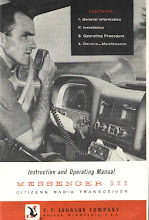 The final film made by Straub and Huillet is a pared down exercise in the ‘pedagogy’ once celebrated by the late critic Serge Daney. A fixed camera mounted on a motor-boat captures in one long take the passing bank of the Loire; the sky is leaden, the foliage sparse; the river swelling. The first ‘event’ in the itinerary of Jean Bricard – the film’s title – comes after several minutes when the boat slows to turn a bend. To the boat itself, the camera, the various floating objects in the river and a moored vessel which the camera has passed is now added the fifth sign of human occupation of this territory (although the camera is autonomous generator of the presence before us and in this sense inhuman): a sign with an arrow pointing the direction round the river’s bend. Halfway back in the opposite direction a voice – that of Bricard himself as recorded in 1993 by the author on whose book the film is based, Jean-Yves Petiteau - surprises us by announcing that what we are observing is an island in the river, an island where he spent his childhood. The boat and the camera continue their course, with a seemingly identical sign and an indistinguishable second bend completing the circuit. Then a fixed shot of a rude country house with loud traffic driving past. An image of the house where he lives shot from across the river, the microphone picking up sounds of traffic from the house rather than the vantage point of the camera.
The final film made by Straub and Huillet is a pared down exercise in the ‘pedagogy’ once celebrated by the late critic Serge Daney. A fixed camera mounted on a motor-boat captures in one long take the passing bank of the Loire; the sky is leaden, the foliage sparse; the river swelling. The first ‘event’ in the itinerary of Jean Bricard – the film’s title – comes after several minutes when the boat slows to turn a bend. To the boat itself, the camera, the various floating objects in the river and a moored vessel which the camera has passed is now added the fifth sign of human occupation of this territory (although the camera is autonomous generator of the presence before us and in this sense inhuman): a sign with an arrow pointing the direction round the river’s bend. Halfway back in the opposite direction a voice – that of Bricard himself as recorded in 1993 by the author on whose book the film is based, Jean-Yves Petiteau - surprises us by announcing that what we are observing is an island in the river, an island where he spent his childhood. The boat and the camera continue their course, with a seemingly identical sign and an indistinguishable second bend completing the circuit. Then a fixed shot of a rude country house with loud traffic driving past. An image of the house where he lives shot from across the river, the microphone picking up sounds of traffic from the house rather than the vantage point of the camera.The sound of various engines intrudes on this film which ends up being about the political ecology of the post-war period and a further entry on the work of this film-making team on this period and its conceptual, aesthetic and political legacies. The Loire was a boundary between the German soldiers and the Americans, the local resistance ferrying the latter and risking arrest and deportation. A plaque commemorates the uncle and associates who were captured doing this. In the middle lies the island, repository of the memory of a pre-war childhood not itself immune to terror – this is the house where rats ate my finger while I slept Bricard recalls.
With the fixed camera on the motor boat, the film frame achieves its own ‘level’ because of the water’s height. The buildings on its banks have been part-submerged by the silting which has occurred in the postwar period when human intervention altered the topography. Bricard’s voice recounts how they once pulled a hundred rabbits to safety from the flood plain, but also is fascinated by the space now not visible once occupied by the oven in a derelict bistro. A reflection on erasure, archival inscription, submergence and divergence: this is a fitting coda to a marvellous oeuvre.

No comments:
Post a Comment